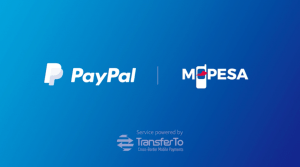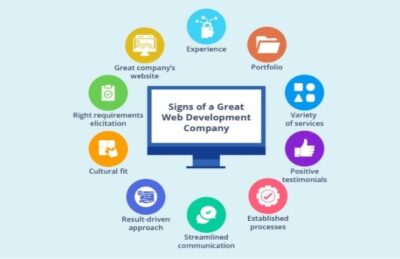A business-managed team extension outsourcing model means augmenting your team with an in-house developer to provide stability and efficiency and fill glaring skill gaps. Basically, a Team Extension is a necessity as your business grows. With developed countries facing tech talent shortages, many companies outsource as an alternative hiring method.
At some point, outsourcing is a sensible option for growing companies, and team extension provides the stability that they need. For one thing, it allows you to bring in new skilled talent to work synergically with your existing team. In other words, the extended team is no different from your in-house developers, who are committed to the same long-term goals.
Deloitte projects that global spending in the IT outsourcing industry will hit $917 billion in 2023 and even more beyond that — showing the attractiveness of this staffing approach. In reality, digitalization is pressuring business owners to hire IT experts for full-time positions as well as for short-term projects. It’s the main idea for the team extension model.
Whilst, helping in outsourcing software tech specialists for any company that will meet all specific requirements. But, Team Extension is often confused with the dedicated team model and outsourcing. In this guide, you’ll learn what a team extension entails, its pros & cons, and how it fits into your business growth strategy. Plus the steps to build an extended team.
Understanding The General Team Extension Outsourcing Meaning
Generally, Team Extension Outsourcing is a software outsourcing service where reputable IT companies fill the missing gap in your team with the right software developers. As an example, Svital is such a great company that allows you to expand your development capabilities — with a dedicated team that works as an extension of your team on your projects only.
With the right team extension outsourcing model, the outsourced developers become an integral part of your team during the entire project. Carefully, they’ll select each team member based on the requirements and expertise you need. Whilst, immersing themselves in your project, maintaining your company culture, and working in line with your strategic goals.
Team extension services allow you to go out of geographical borders and employ skilled professionals all over the globe. That’s a cost-reducing solution that provides you with a tech specialist without any need of building an in-house team. If you have a business issue you cannot solve with an already existing team, choose an extension model and fill up the skill gaps.
A strong employer knows that there is no need to waste months on research for best-fitting candidates. Unfortunately, despite its viability, setting up an extended software team can also be quite challenging. That said, in the next section, we’ll have a look at both the benefits and the drawbacks associated with a managed team extension outsourcing service for businesses.
How A Managed Product Development Team Extension Structure Works
Innovative fintech programs, blockchains, or embedded finance services could be essential for lots of companies. However, only the presence of technologically advanced experts on your team will help you reach your goals efficiently. While, at the same time, decreasing transaction fees and providing high-class financial services in the process. So, what is the structure like?
A managed team extension involves engaging external developers to fully commit their time and skills to your company. Now, this might sound like hiring a dedicated team, but they are not similar. A dedicated team focuses on a specific project and ends its service upon the agreed timeline. Meanwhile, an extended team works as if they are your permanent employees.
They adapt to company culture, strive towards the same goals, and are a part of the bigger team. This means, that managing an extended team is similar to leading an in-house team. You will be responsible for managing, coordinating, and reviewing tasks given to developers who are an extension of your team. The approach might differ depending on a few things.
For instance, a case scenario such as whether you hire them directly on freelance platforms or outsource from IT staffing providers. For the latter, you can consult with the IT outsourcing firm on recruitment, onboarding, and adapting to your company’s culture. Overall, the innovative solutions are for any company in need of new talented, and skilled IT developers.
The Main Team Extension Outsourcing Benefits And Drawbacks To Know
In general, there are many ways that a team extension benefits those businesses that outsource these services. For instance, enterprises seeking skilled IT talents to complement their team will benefit from the software team extension model. It allows them to tap into vast IT talent pools, particularly in Eastern Europe, and fill their team with the right experts.
For taking a company to the next level, leaders should broaden their team with new specialists with deep expertise as well as some extra skills that are lacking. Every software development team has to be packed with professionals for first-class performance. So, don’t miss out on opportunities and learn how they can assist you with timely managed team extensions.
Whether you build up a team of developers or search for specific someone to support you reach a new project goal managed teams can assist you with both. By learning more about your vision and ideas they can point out what type of expert you’re missing for a more efficient workflow. Working in various industries has helped us gain an understanding of modern needs.
Such as the hiring process of skilled tech talents that would be perfectly suited to clients’ business requirements or developing goals. Meanwhile, tech startups might find that an extended managed team extension helps boost growth in the long run.
The Benefits:
1. Scale Faster
Team extensions solve the predicament of finding the right tech talent for a growing company. Rather than going through the conventional recruitment process, businesses enlisted IT outsourcing firms to meet their staff augmenting needs. This allows companies to focus on marketing, management, and expansion, instead of being mired in the technicalities of recruiting software experts.
Providing you with a talent pool increases your chances of completing your challenges of team extensions way faster. Sometimes it’s nearly impossible to fill in the position quickly in your area, even if you’re in the middle of Silicon Valley. But, outsourcing offers you access to a pool of candidates with relevant skills and knows how to meet the expectations of clients.
2. More Flexibility
It takes a lot of money, human and most importantly time resources for a complete team to start designing the product and reaching the final vision, yes. But, a managed team extension offers perfectly fitted, reliable candidates to meet all contract requirements as soon as possible. With the convenience of technology, they do not necessarily report to work on-premise.
Instead, your developers can work from any part of the world and still be reachable. Using their experience to understand your company workflow specifics and organizational tasks, they’ll find the best-fitted candidates for you. In addition, they can also guarantee that they’re up for any task you can throw at them at any time.
3. Unlimited Skills
At all costs, most team extensions give more chances for engagement and control at every stage of the project. They are also equipped with more opportunities to give out complex tasks to team members. Plus, you can manage an offshore development team as well as those on a full-time basis and distribute tasks and duties among them for more effective solutions.
Unlike Java, some software skills are rare among developers. For example, you might need to help hire an experienced cloud security specialist or a developer who knows how to create a compliance fintech app. In such cases, a managed team outsourcing extension allows you to tap into a global talent pool and hire developers with specific skills.
4. Expenses Saving
It’s no secret there is a difference in budget costs between having in-office and remote working teams. For such and other reasons, a great way for optimizing development costs is by saving money on office work maintenance, taxes, and salaries. Essentially, this is something that allows you to invest more in qualified talents for reaching world-class results.
To illustrate, a majority of companies based in developed nations often pay high salaries when hiring local software developers. Significantly, they can reduce remuneration and operational expenses using the managed team extension model. By turning to developers in Eastern European countries, they can hire equally-capable developers at a lower fee.
5. Reduced Risks
Growing companies can’t afford the instability when outsourced developers juggle multiple projects simultaneously. An extended team is fully committed to the company and its vision. It helps companies to mitigate risks in building, releasing, and supporting complex apps. Sometimes, there is even no need for trials, as they’ll offer future employees all expertise needed.
Powered with a collective work experience that would be a perfect fit for your custom solutions and vision. When using an innovative approach of extended team services, you’ll get specialists ready to get down to work right away. For a growing project, it’s a huge advantage as you can faster meet your deadlines and proceed to the delivery of products.
The Drawbacks:
1. Full Commitment
On one side, extended teams provide stability and fill missing technical gaps for a growing company. These developers are committed to long-term growth, professionally and individually, with your company. You get a dedicated team that builds strong bonds with your existing team. Conversely, team extension incurs a long-term financial commitment to your business. You must pay fixed salaries, and perks like you did for your in-house teams. Also, you’re solely responsible for leading the extended team in projects.
2. Longtime Results
The team extension model is not a short-term solution to your software development issues. It takes time for the new developers to gel with your in-house team before they produce value. If you’re looking for a quick fix to software issues or have a deadline to meet, do consider other outsourcing approaches.
3. Ongoing Expenses
In return for the stability, skills, and scalability they offer, you must pay for the salaries of the extended team. Despite being an outsourcing model, team extension does not promise low operational costs. Choose team extension when long-term values are essential to you. Else, consider flexible pricing models such as time-based or fixed-price engagements.
4. Cultural Barrier
The team extension approach allows you to hire developers from different regions. While doing so, remember that cultural differences might impact the team’s performance. For example, if the extended team of developers struggles to communicate in English, you’ll worry about the project outcome. Hence, many Western companies turn to Ukrainian developers to mitigate cultural differences.
5. Team Assimilation
It takes time for outsourced developers to blend and develop rapport with the existing team. The progress varies depending on your leadership style and communication skills. If you ensure that everyone is treated fairly, the new developers will find themselves at home in no time. Likewise, stating goals and tasks clearly helps the extended team to start on the right path.
The Simple Steps To Make Your Managed Team Extension Effective
Obtaining the ideal relationship with the outsourcing partner starts with declaring your expectations clearly — more or less the same as a romantic relationship. The first stage is to ensure that both you and the fit outsourcing company are writing down the software development proposal. Doing so sets up transparent communication and makes expectations clear.
You can’t expect an extended managed team extension to be immediately productive once hired. Instead, you must have a solid plan in place to empower them. Either you need to fill up expertise gaps or collect a new squad for an upcoming short-term project. An effectively managed team outsourcing model allows you to find dedicated, skilled, and experienced people.
The extended team outsourcing model allows you to reach out to the right team without limiting yourself to any geographical borders. Any managed team extension model allows you to employ people around the globe to fill up your expertise gaps. After going through all the needful processes, you’ll have a complete team in no time! So, here’s what you need to do.
Step #1: Illustrate your optimal business goals
Consider why you’re setting up an extended team in the first place.
- Do you need additional help managing an existing app?
- Do you need to personalize features for different markets?
Stating your goals helps in shortlisting suitable candidates. It allows developers to relate their aspirations with what your company does. This is important because team extension requires a long-term commitment from both parties.
Step #2: Define the scope of the development tasks
Just like regular employees, members of an extended team need to be aware of their roles. Specifically, what the company expects of them from day one. With a clear definition of their roles and responsibilities, the extended team can live up to their potential. So, pen down the job scope in detail and leave no room for misinterpretations.
As known, the key difference between the dedicated development team and the innovative extended team is the level of control, and clarity of communication you can get during the progressing, ongoing project. With a dedicated team, you don’t have access to supervise the development of a project. However, with team extension services no need to demand any access.
Like the access to the workflow of your team. You gain direct control to distribute tasks and we can assist you with making sure the team extension specialists are following the deadlines and working on the project scope. On the other hand, a dedicated team means there is a complete team of professional tech specialists working on your project.
And you can transfer your further ideas through the project manager. We believe that a dedicated team is perfect for complex projects while an extended team would be better to help in urgent software solutions or for instant support.
Step #3: Determine your technological requirements
Developers come with different skill sets. To hire the right one, identify which technological stacks are important for the job. For example, you’ll need a software developer with Python, Django, and a good understanding of API to build backend apps. Writing a request for proposal (RFP) comes in handy here. Check this article with tips on writing RFP and get a free template.
By the same token, an RFP is a request for a proposal that ideally reflects the company’s personality when looking for a vendor. It provides all your requirements and expectations from the collaboration and leads to a comprehensive and fair response. If you plan to source any services or goods, RFP is an incredibly valuable tool.
You should write specifically a request for a proposal for software when things come to sourcing IT services. The goal of a software development RFP is to ensure that the partnership between you and your IT outsourcing partner will be prosperous and successful for both sides. It’s in your best interest to give the most comprehensive company overview right at the start.
An RFP Includes:
- Company Description
- Outsourced Project Overview
- Scope Of Work
- Deliverables
- Technical Requirements
- Project Management
- Budget Details
- Evaluation Criteria
- Process Description
To create an effectively managed team extension outsourcing proposal for your business, just imagine that you are introducing your company to investors for the very first time. Try to tell the story and make sure to be short, organized, and specific.
Step #4: Establish transparent communication with a proposal
Clear and concise communication is key to a mutually-beneficial working relationship with the extended team. Decide how you will share information, coordinate projects, assign tasks, and receive feedback before hiring the developers. More importantly, ensure you’re reachable if the new hire stumbles into problems. Usually, established businesses can easily afford this.
But, for most companies, it’s rather a luxury than a rule, especially for startups. So, in the case of a startup business or organization that doesn’t have well-defined processes, that’s where CEOs, co-founders, or product owners come in handy. For one thing, they are those people who take responsibility for writing the software development request for proposal.
When you bid on software development projects, you are willing to overcome certain business expectations, right? That’s why you should be ready to spend extra time and provide potential software or product development-managed team extensions with a proposal that makes them more comfortable with their decision. Comprehensive market research is key.
Either way, it is very important to both you and your potential partners. So you are all sure to include the time for making a detailed competitor’s analysis and proto personas description to the estimate – not just the nuts and bolts of getting the work done. Always remember, a team that overgoes your expectations is a better partner than one with an attractive check.
Step #5: Engage with the outsourced team extension company
It’s, important to realize, as soon as you have engaged the right candidate, transparency is the key. And it’s not just a fancy phrase, but it works. If you have an existing design, attach it. It could be a Figma file or a clickable prototype. Yes, we know you may be worried about the privacy issues, but it’s a matter of days to sign an NDA, and you’re safe and sound.
Along with articulating everything clearly and openly, you should leave some space for creativity. It’s like balancing the surfboard. The main weight should be on the toes, but balancing on heels prevents you from falling. Moreover, if you set the requirements too strictly, the decision-making process comes down to price comparison — give more freedom where possible.
With that in mind, there is no one-off structure for a perfect software development RFP, yes, but we all know whether it’s a good or a bad one when we read it. If you don’t have a separate person who creates RFP, take your time to write it correctly from the beginning. Start with the more general information, and with every step give more and more details.
You should balance between sharing the requirements and giving space. As a result, the proposal you will be submitting will not only be of higher quality, but chances are you will end up with the best service vendor you would want.
The Simple Steps To Hire A Reliable Team Extension Partner
The easiest way to get team extension services from a managed software or product development team would be to get in touch! With a dedicated team approach, they’re always prioritizing customers and sharing solution vision with you to make sure that they provide the best tech support you can get. Team extension focuses on providing all businesses solutions.
With urgent, talented candidates, and luckily they have a huge network of IT geniuses. They must have developed a unique recruitment process, based on industry best practices. More so, to enable their recruitment team to find the best experts in the market for your team extension project. This vital part of a project life-cycle ensures a successful result.
In a nutshell, hiring developers as a part of team extension requires thoughtful deliberation because they are pivotal to your growth journey. In that case, you can follow these steps to onboard a reliable partner.
1. Identify your overall business goals
Every company and startup has unique technical and business goals, right? Perse, try to go into the subtle details, such as what types of app you aim to build and what tech stacks it requires. Do you need someone to hop onto the team and get started with little handholding? If so, a seasoned developer is a better option than one relatively new to the industry.
2. Search for the company based on your needs
The next step lies in searching for the right candidate. There is various avenue to do so — including online review websites, forums, and professional comparison websites like Clutch and other related ones. Regardless of your option, do your due diligence by checking what other customers say about the respective software companies.
3. Check the general cooperation conditions
Only some candidates will fit the terms you’ve set. This includes rate, qualifications, skills, and mode of communication. It’s also crucial for developers to adhere to privacy and non-disclosure agreements. Go through the checklist in detail and proceed if you find one who ticks all the boxes.
4. Set up a meeting on an introduction call
Chances are, you’ll be working closely with the new hire for years. So, take the time to call up the candidate, preferably on video, to get to know each other better. Discuss your project in detail, and convey your expectations to the candidate. While doing so, evaluate their soft skills, which might come in handy when they join your team.
5. Ask to do a test task before you fully engage
Finally, assign the candidate a paid trial task to ensure their capabilities match the credentials on paper. It prevents hiring a candidate who falls short of their stated skills.
Summary Notes:
In simple terms, every time you call for a plumber to repair your sink or a baker to prepare a birthday cake, you outsource. On that note, software development outsourcing to an IT company is more or less the same. Despite the fact that the responsibility is bigger, the risks are higher, and the process is more complex.
Setting aside a budget before hiring developers for your extended team is wise. The budget size largely depends on the region in which the developer is based. For example, a US company may pay an average of $101,792 per year for augmenting its team with US developers. Meanwhile, businesses pay £43,040 per year on average when they hire developers from the UK.
On the contrary, the salary for developers in various locations such as Asia may vary at a scale. For example, Indian developers make $8,603 annually, while their Chinese counterparts make $9,832 per month to be precise. However, you’ll need to anticipate cultural differences and language gaps when hiring developers from these regions.
Your best bet is to hire developers from Eastern Europe, where the average price for their services is approximately $95,589 annually which will save you some big outsourcing cost margin. Moreover, they are fluent English speakers too. All in all, if you’ll need more support in any way, our team of Web Tech Experts will be glad to, promptly, sort you out as well.











Thank you for sharing excellent informations. Your site is so cool. I’m impressed by the details that you?¦ve on this blog. It reveals how nicely you perceive this subject. Bookmarked this website page, will come back for extra articles. You, my friend, ROCK! I found simply the info I already searched everywhere and just couldn’t come across. What a perfect site.
Comments are closed.